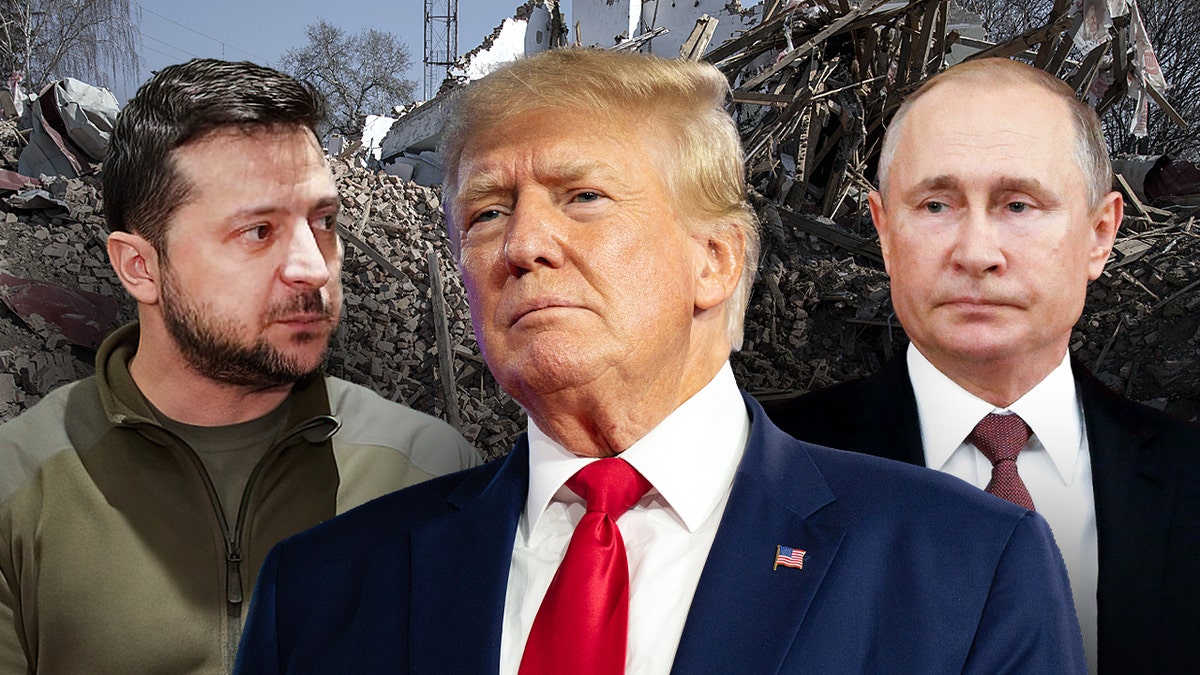
Amid War’s Fourth Year, Trump’s Russia Diplomacy Raises Questions and Concerns
As Ukraine marks the fourth year of conflict, the world remains on tenterhooks as former CIA Moscow station chief Dan Hoffman warns, "We are way closer to the beginning than we are to the end." Amidst this geopolitical turmoil, President Donald Trump’s recent diplomatic overtures towards Russia have sparked a flurry of inquiries and apprehensions.
Trump’s Diplomatic Moves and Their Implications
Following his re-election on November 5, 2024, President Trump has initiated a series of high-level engagements aimed at forging a path towards peace in Ukraine. These efforts have included phone calls with Russian President Vladimir Putin, meetings between Secretary of State Marco Rubio and his Russian counterpart Sergey Lavrov, and a visit by special envoy for Ukraine and Russia Keith Kellogg to meet with Ukrainian President Zelenskyy.
Furthermore, Defense Secretary Pete Hegseth’s declaration that Ukraine is unlikely to join NATO has triggered international debate and raised questions about the future trajectory of the conflict.
Uncertainties Surrounding a Ceasefire
Hoffman candidly acknowledges the significant obstacles that lie ahead in securing a ceasefire. "What a ceasefire would look like? I have no idea," he remarks, emphasizing the myriad factors that could determine whether Moscow and Kyiv reach an agreement. "It’s getting the Russians to stop. That’s the key," he explains.
The key challenge, according to Hoffman, is to persuade Russia to end its aggression. While Russia may be enticed by the prospect of reduced sanctions, its leadership, particularly Putin, harbors deep animosity towards the United States.
Russia’s Negotiation Strategy
Hoffman believes that Putin’s negotiating strategy will center around portraying Russia as an equal to the United States and seeking to outmaneuver the West in order to bolster his own image and enhance Russia’s global standing.
Security Guarantees and NATO Membership
One of the critical issues in ceasefire negotiations will be the provision of security guarantees to Ukraine. This includes addressing Russia’s potential influence over Ukraine’s aspiration to join NATO.
According to Catherine Sendak of the Center for European Policy Analysis (CEPA), Ukraine’s NATO membership should not be used as a bargaining chip to grant Russia a de facto veto power over the alliance.
Concerns over European Involvement and US Role
European nations, such as the United Kingdom and France, have expressed willingness to provide troops as a deterrent force in the event of a ceasefire. However, Russian officials have already rejected the presence of NATO forces in Ukraine.
Questions linger about the capacity in which European forces would serve as a deterrent, whether they would be responsible for policing Ukraine’s border with Russia or providing air and naval support. Security experts agree that US involvement is crucial, but the Trump administration has hinted at a possible reduction in American troop presence in Europe.
Putin’s Territorial Ambitions and Zelenskyy’s Stance
Putin has made it clear that his latest war objective is to annex four Ukrainian regions: Luhansk, Donetsk, Zaporizhzhia, and Kherson. However, none of these regions have been fully occupied by Russian forces.
Zelenskyy has categorically rejected any land concessions to Russia, including Crimea, which has been illegally occupied since 2014. Hegseth, however, suggests that Crimea may be an unrealistic objective in ceasefire negotiations.
Divisions Between Europe and the US
The Trump administration’s emphasis on greater European involvement in providing military support to Ukraine has raised concerns about the future of US-European relations. As European nations seek to bolster their defense capabilities without Washington’s support, security experts warn of a shift in geopolitical perspectives, leading some European countries to view the US as part of the problem rather than a solution.
Experts’ Warnings and Putin’s Objectives
Security experts caution that the growing rift between the US and Europe under the Trump administration aligns with one of Putin’s long-standing goals. "I think Putin is very happy he has been able to achieve one of his strategic goals, which is create disunion and division among the United States and its allies in the transatlantic relationship," remarks William Monahan of CEPA.
Trump’s Rhetorical Attacks and Putin’s Calculus
When asked whether Trump’s controversial statements about Zelenskyy and Ukraine could influence Putin’s negotiating strategy, Hoffman responds with uncertainty. However, he acknowledges that such rhetoric does not present a favorable image of the US and could embolden Putin’s perception of a weakened transatlantic alliance.
"He [Putin] thinks he can break Europe. He doesn’t think Europe is going to be strong enough without the United States," Hoffman argues. "NATO has always been an alliance to deter Russian aggression."
Hoffman concludes by cautioning against making hasty judgments and emphasizing that the situation remains fluid. "We’re nowhere close to knowing how all this is going to play out. Right now, you’re just hearing a lot of noise."
